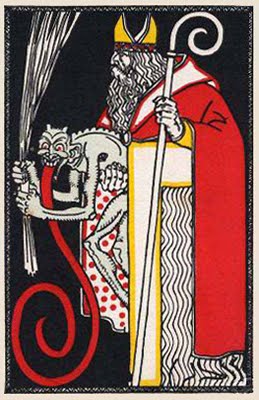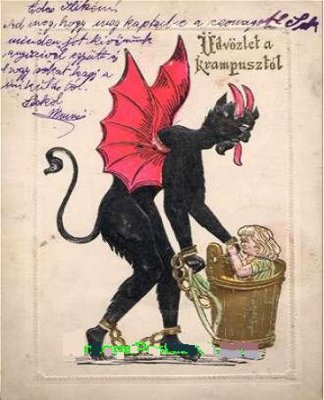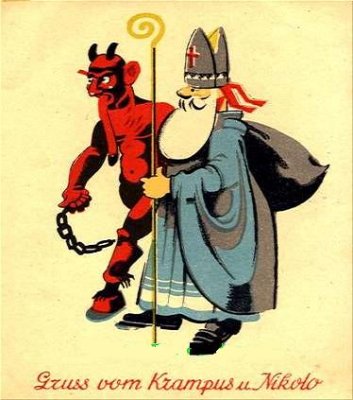
This weekend was cooking and wrapping. Today is working and shipping. Need to buy stamps for all the holiday cards and get the boxes sitting in the hallway into the wonderbus and out of my house and into someone elses! I boiled down a turkey carcass yesterday--yielding some nice soup along with making some oatmeal cookies with all ingredients from around here. Additionally, I made a dinner for all the Cassettis with a great potato recipe from the December Good Food Magazine. All was devoured to our delight. Friday, we were surprised to have our half pig delivered to our happiness. This jackpot was sweetened by a lot of bacon and sausage, two hams, and all sorts of roasts and chops. We were given a chicken as a bonus. So, we tried the bacon on Saturday and the sausage on Sunday to our pleasure as it is very lean and delicious...and as we know where this creature was raised and who did the raising, it has even more appeal. We are so grateful to have been included in this select group as it makes being a localvore easier.
I have been researching Krampus--one of the companions of St Nicholas. He is one of many pals of Nick--each having their own local flavor and relationship. The French have "Père Fouettard (the whipfather), who is said to be the butcher of three children. St. Nicholas discovered the murder and resurrected the three children. He also shamed Père Fouettard, who, in repentance, became a servant of St. Nicholas. Fouettard travels with the saint and punishes naughty children by whipping them. In modern times he distributes small whips, instead of thrashings, or gifts." from Wikipedia
More from Wikipedia:
Appearance
Often the subject of winter poems and tales, the Companions travel with St. Nicholas (also called Father Christmas or Santa Claus), carrying with them a rod (sometimes a stick and in modern times often a broom) and a sack. They are sometimes dressed in black rags, bearing a black face and unruly black hair. In many contemporary portrayals the companions look like dark, sinister, or rustic versions of Nicholas himself, with a similar costume but with a darker color scheme.
Krampus
In parts of Austria, Krampusse is a scary figure, most probably originating in the Pre-Christian Alpine traditions. Local tradition typically portrays these figures as children of poor families, roaming the streets and sledding hills during the holiday festival. They wore black rags and masks, dragging chains behind them, and occasionally hurling them towards children in their way. These Krampusumzüge (Krampus runs) still exist, although perhaps less violent than in the past.
Today, in Schladming, a town in Styria, over 1200 "Krampus" gather from all over Austria wearing goat-hair costumes and carved masks, carrying bundles of sticks used as switches, and swinging cowbells to warn of their approach. They are typically males in their teens and early twenties, and often get very drunk. They roam the streets of this typically quiet town and hit people with their switches. It is not considered wise for young women to go out on this night, as they are popular targets.
In many parts of Croatia, Krampus is described as a devil, wearing chains around his neck, ankles and wrists, and wearing a cloth sack around his waist. As a part of a tradition, when a child receives a gift from St. Nicolas he is given a golden branch to represent his/hers good deeds throughout the year; however, if the child has misbehaved, Krampus will take the gifts for himself and leave only a silver branch to represent the child's bad acts. Children are commonly scared into sleeping during the time St. Nicolas brings gifts by being told that if they are awake, Krampus will think they have been bad, and will take them away in his sack. In Hungary, the Krampusz is often portrayed as mischievous rather than evil devil, wearing a black suit, a long red tongue, with a tail and little red horns that are funny rather than frightening. The Krampusz wields a Virgács, which is a bunch of golden coloured twigs bound together. Hungarian parents often frighten children with getting a Virgács instead of presents, if they do not behave. By the end of November, you can buy all kinds of Virgács on the streets, usually painted gold, bound by a red ribbon. Getting a Virgács is rather more fun than frightening, and is usually given to all children, along with presents to make them behave
Belsnickel
Belsnickel is a companion of Santa Claus of the Palatinate (Pfalz) in northwestern Germany. Belsnickel is a man wearing fur which covers his entire body, and he sometimes wears a mask with a long tongue. He is a rather scary creature who visits children at Christmas time and delivers socks or shoes full of candy, but if the children were not good, they will find coal and/or switches in their stockings instead.
Zwarte Piet (Black Peter)
In Belgium and the Netherlands, children are told that Zwarte Piet leaves gifts in the children’s shoes. Presents are said to be distributed by Saint Nicholas aide Zwarte Piet; who enters the house through the chimney, which also explains his black face and hands. Blackfaced, googly-eyed, red-lipped Zwarte Piet dolls are displayed in store windows alongside with brightly packaged holiday merchandise.
Knecht Ruprecht
It is unclear whether the various companions of St. Nicholas are all expressions of a single tradition (Knecht Ruprecht), (since various texts, especially those outside the tradition, often treat the companions as variations of Knecht Ruprecht), or most likely a conflation of multiple traditions.
Knecht Ruprecht is commonly cited as a servant and helper, and is sometimes associated with Saint Rupert. According to some stories, Ruprecht began as a farmhand; in others, he is a wild foundling whom St. Nicholas raises from childhood. Ruprecht sometimes walks with a limp, because of a childhood injury. Often, his black clothes and dirty face are attributed to the soot he collects as he goes down chimneys."
I think there may be some pictures here as the concept of these very frightening cohorts of the Saint, not even our Santa Claus, intrigues me. This whackdoodle way of presenting good and evil particularly to very little children springs fully formed from the same source that brought us the wonderful world of Slovenly Peter and the tales of the Brothers Grimm, where the happiest of every afters generally manifests itself in some small and dirty unwanted heroine or hero freezes and dies in the cold.
And so the new adventure begins!
 Krampus, Q. Cassetti, 2010, pen and inkKrampus is the dark companion of St. Nicholas, the traditional European winter gift-bringer who rewards good children each year on December 6. The kindly old Saint leaves the task of punishing bad children to a hell-bound counterpart known by many names across the continent — Knecht Ruprecht, Certa, Perchten, Black Peter, Schmutzli, Pelznickel, Klaubauf, and Krampus. Usually seen as a classic devil with horns, cloven hooves and monstrous tongue, but can also be spotted as a sinister gentleman dressed in black or a hairy man-beast. Krampus punishes the naughty children, swatting them with switches and rusty chains before dragging them in baskets to a fiery place below.
Krampus, Q. Cassetti, 2010, pen and inkKrampus is the dark companion of St. Nicholas, the traditional European winter gift-bringer who rewards good children each year on December 6. The kindly old Saint leaves the task of punishing bad children to a hell-bound counterpart known by many names across the continent — Knecht Ruprecht, Certa, Perchten, Black Peter, Schmutzli, Pelznickel, Klaubauf, and Krampus. Usually seen as a classic devil with horns, cloven hooves and monstrous tongue, but can also be spotted as a sinister gentleman dressed in black or a hairy man-beast. Krampus punishes the naughty children, swatting them with switches and rusty chains before dragging them in baskets to a fiery place below.


















